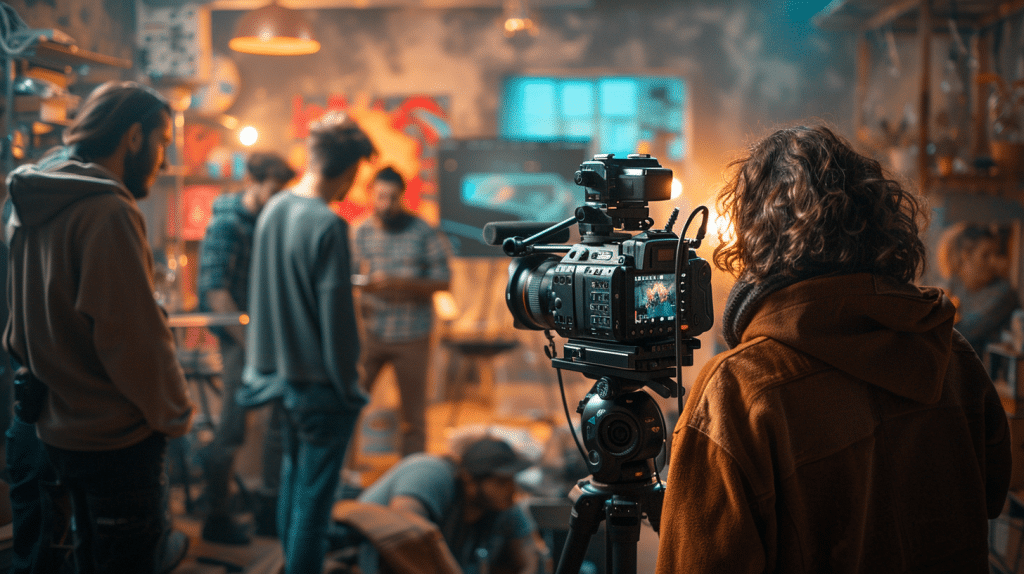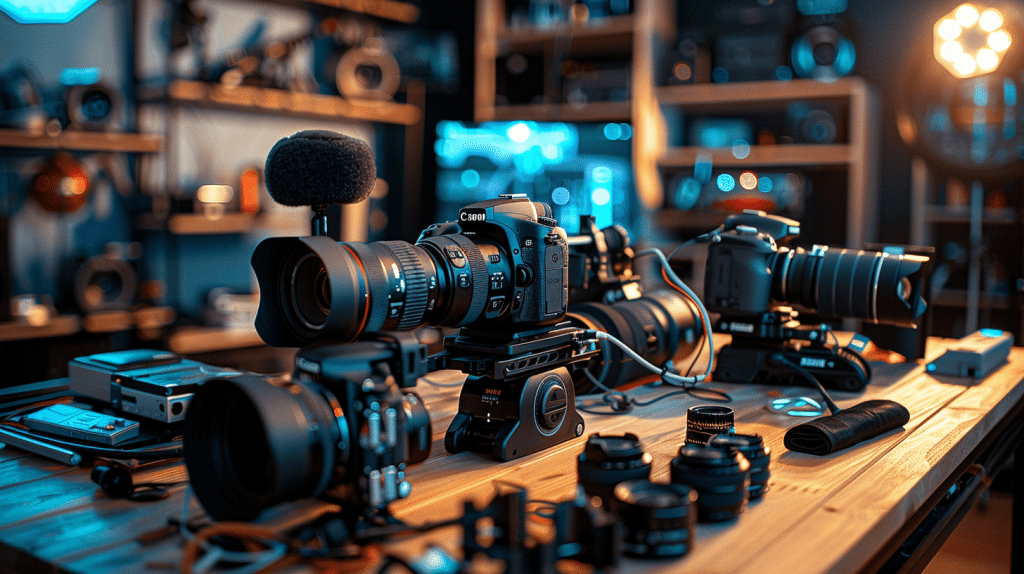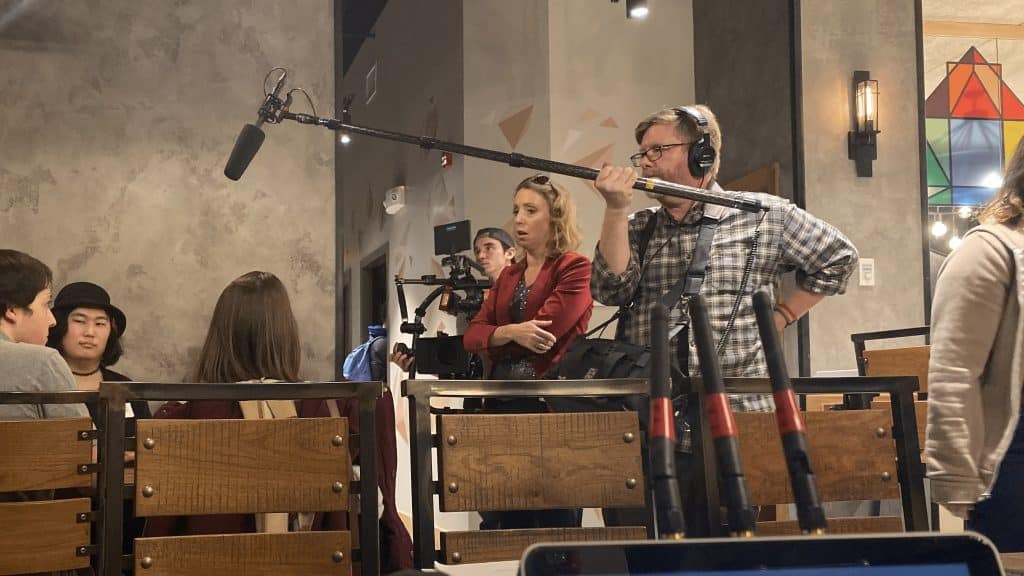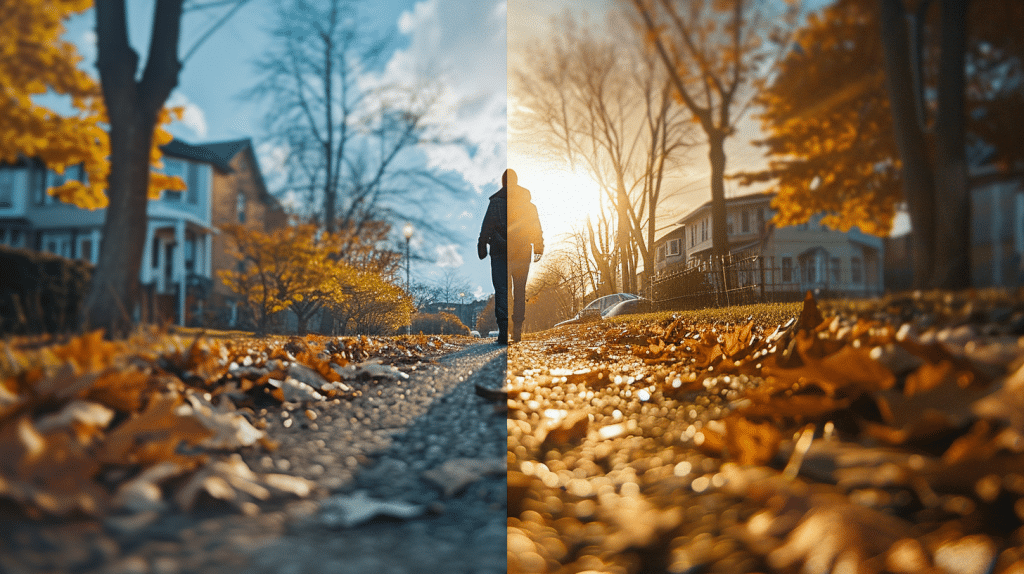How to Make an Interesting Video: Essential Tips for Captivating Content

Creating an interesting video begins with identifying your core message. You’ve got to know precisely what you want to communicate and, more importantly, why it matters to your audience.
From there, the journey involves crafting a script and storyboard that not only tells a story but also captivates.
You’ll choose the right equipment—something that doesn’t break the bank but still delivers quality visuals and sound. But what’s next?
How do you guarantee that your video stands out in a sea of content and truly engages your viewers?
The answer might surprise you.
Table of Contents
Define Your Core Message

Before you immerse yourself in the creative process, it’s essential to identify the core message you want to convey in your video.
This isn’t just about what you want to say, but how it aligns with your goals and resonates with your audience. You’re not just throwing content out into the void—you’re crafting a message meant to land with impact.
Start by performing a thorough audience analysis. Who are they? What do they care about?
Understanding your audience’s preferences and pain points ensures that your message isn’t just heard, but felt. This isn’t just about knowing ages and locations; it’s about diving deep into the cultural, emotional, and intellectual fibers that define them.
Next, align your message with your goals. Are you looking to inform, entertain, persuade, or inspire?
Your objective shapes the message and its delivery. Ensuring goal alignment keeps your content relevant and focused—there’s no room for wandering off track.
Focus on message clarity and impactful delivery. Every word you choose, every image you include should serve the purpose of making your message clear and powerful.
Remember, a well-defined message stands out in a sea of content, capturing attention and provoking thought.
Script and Storyboard Planning

Having established your core message, you’ll now want to map it out visually through script and storyboard planning. This phase is important as it transforms your abstract ideas into concrete scenes and sequences.
Begin with the narrative structure; think of it as the skeleton of your video. Lay out a clear beginning, middle, and end. Ask yourself how you want your viewers to feel at each point and use emotional pacing to keep them engaged throughout.
Next, immerse yourself into character development. Even if you’re not creating a character-driven piece, any on-screen presence must have depth and motives that resonate with your audience.
Sketch these elements out in your script, ensuring each character’s dialogue highlights their unique traits and pushes the narrative forward.
Now, bring in visual metaphors to add layers to your story. These are powerful tools that can visually symbolize complex concepts or emotions, giving your video a richer texture.
Selecting the Right Equipment

Now it’s time to choose the right equipment that’ll bring your video to life with clarity and professional flair.
First off, let’s talk about camera types. Whether you’re eyeing a DSLR for its versatility or a mirrorless model for its compact size, each camera type has its own unique advantages. You’ve got to contemplate what suits your shooting style and the nature of your videos.
Next up, lens selection is vital. A good lens can greatly enhance image quality.
Think about whether you’ll need a zoom lens for its flexibility or a prime lens for better low-light performance. It’s all about the visual impact you want to achieve.
Don’t overlook the importance of tripod stability. A sturdy tripod is your best friend for achieving sharp, steady shots, especially in dynamic shooting environments. It’s worth investing in one that can handle the weight of your camera and lens setup without wobbling.
Accessory compatibility also plays a significant role. Make sure your camera is compatible with external microphones, lights, or other gadgets you plan to use. These can enhance your production quality significantly.
Setting the Scene

After selecting the right equipment, it’s time to focus on setting the scene to capture your vision effectively.
Location scouting is your first step. You’ll need to hunt down places that resonate with your story’s mood and theme. Whether it’s a bustling city corner or a serene beach, make sure the location amplifies your narrative.
Next, consider atmospheric elements. These are subtle yet significant. Think about the general ambiance you want to create.
Do you need fallen leaves to suggest autumn, or perhaps a gently humming neon sign for a noir feel? Each element should layer together, building a rich, immersive world.
Prop selection is equally essential. Every item in your shot should have a purpose, whether it’s to add authenticity or to subtly hint at your character’s backstory. Choose props that speak to the viewer without needing a dialogue.
Costume design can transform your actors into the very essence of their characters. The right outfits reflect period, personality, and situation, all while contributing to the visual storytelling.
Mastering Lighting Techniques

Why is mastering lighting techniques important in video production?
Well, lighting isn’t just about making sure your audience can see what’s happening. It’s about setting the tone, creating mood, and directing viewer attention exactly where you want it.
Imagine you’re filming a dramatic scene. By manipulating shadow and light through lighting ratios, you can accentuate facial expressions and intensify the scene’s emotional impact.
Soften harsh shadows with diffusion materials, like frosted gels or softboxes, to give your subject a more flattering, professional look. This technique is essential, whether you’re indoors under artificial lights or using natural light streaming through a window.
Speaking of natural light, it’s unpredictable, but you can harness its power. The golden hours—just after sunrise or before sunset—offer the most alluring natural light, casting long, dramatic shadows and bathing your video in a warm glow. However, midday sunlight can be harsh and unflattering. Here, use reflectors to bounce light, or portable diffusers to soften it.
Don’t overlook color temperature either. Different light sources emit different hues; fluorescent lights can cast a cool, bluish tone, while incandescent bulbs offer a warm, yellowish glow.
Matching these correctly in post-production can be a nightmare, so pay attention while shooting to maintain consistency in your visual storytelling.
Capturing Quality Audio

Just as important as visual elements, capturing high-quality audio guarantees your video resonates with its audience on every level. Let’s delve into how you can achieve pristine audio that complements your visuals perfectly.
First, understanding microphone types is essential. Whether you opt for a lapel, shotgun, or condenser mic, each serves different purposes and environments. A lapel mic is ideal for clear dialogue, while a shotgun mic excels in directional audio capture, minimizing ambient noise.
Noise reduction is your next tool. It’s not just about the right mic; it’s also about controlling your environment. Identify potential sources of noise and mitigate them. Use windscreens outdoors and consider soft surfaces indoors to dampen echo.
Now, onto audio syncing—a step you can’t skip. Syncing audio with your video in post-production ensures that your sound matches the visual cues precisely. It’s frustrating to watch a video with mismatched audio, so take the time to align everything seamlessly.
Lastly, don’t forget about level adjustments and vocal clarity. Adjusting the audio levels ensures that no part of your dialogue is too quiet or overwhelmingly loud, maintaining an enjoyable auditory experience.
With these tips, you’re set to capture audio that’s as compelling as your video.
Shooting Effective Angles

Selecting the appropriate angles is crucial to crafting a visually engaging video that encapsulates the essence of your story.
Dynamic framing isn’t just about what you shoot, but how you shoot it. Consider the rule of thirds application; position your subject along these lines to create balance and intrigue in your composition. This technique draws the viewer’s eye into the scene, rather than just glancing over it.
Don’t hesitate to experiment with perspective shifts. Altering the camera’s height or angle can dramatically change the story’s impact.
For example, low-angle shots can make your subject appear larger and more formidable, ideal for portraying power. Conversely, high-angle shots tend to diminish the subject, often creating a sense of vulnerability.
Incorporate aerial shots to provide a grand, expansive view of settings, which can be especially compelling in outdoor or scenic videos. These shots give viewers a fresh perspective that ground-level filming can’t capture.
Lastly, don’t overlook the power of close-up details. These shots bring a sense of intimacy and immediacy, capturing emotions and reactions that might be missed in wider shots. They can reveal underlying themes or highlight critical moments, adding depth to your visual storytelling.
Engaging Editing Strategies

Once you’ve captured your footage, it’s time to transform it through the art of editing, ensuring every cut and shift enhances the storytelling.
Begin by exploring creative shifts that do more than just switch scenes; they can convey a mood or signify a lapse in time. A morph shift blends scenes seamlessly, suggesting continuity, while a whip pan introduces energy and movement, perfect for faster-paced segments.
Color grading is your next powerful tool. It isn’t just about correcting images; it is also about setting the tone of your video. Warm tones can evoke nostalgia, while a cooler palette might create a sense of calm or detachment. It’s essential to maintain color consistency throughout to keep the visual narrative cohesive.
Don’t overlook the impact of pacing variations. Slowing down a particularly impactful moment can deepen the viewer’s emotional response, while speeding up can heighten excitement or convey urgency. This control, over time, manipulates how the audience experiences the story.
Lastly, incorporate dynamic overlays and visual effects sparingly.
Overlays like text or animated icons can add a layer of meaning or highlight key points, whereas visual effects should enhance the reality you’re portraying without overshadowing the content. Choose wisely to keep your audience engaged without distraction.
Adding Music and Sound Effects

Adding the right music and sound effects can transform your video, elevating the emotional impact and enhancing the overall atmosphere.
When you select your soundtrack, think of it as the heartbeat of your project. Each beat and melody should resonate with your video’s theme and the emotions you want to evoke.
Don’t just grab any tune; invest time in soundtrack selection to make sure it complements your visual storytelling.
Licensing music is important. You can’t just use any song you love without permission.
Look into royalty-free libraries or platforms where artists offer their tracks for licensing. This keeps you on the right side of the law and supports musicians.
Sound diversity is your secret weapon. Mixing natural sounds with your soundtrack adds layers and texture, making your video feel more authentic and immersive. However, keep an eye on audio balance.
You want your effects to enhance, not overpower, your dialogue or narration. Adjusting the levels so that your background sounds supportive rather than dominant is key.
Tips for Sharing and Promotion

To effectively boost your video’s reach, start by identifying the right platforms for sharing and promoting your content.
Think about where your target audience hangs out online. Is it Instagram, YouTube, or maybe TikTok? Each platform has its own unique audience and style, so choose wisely to maximize impact.
Next, ramp up your social media outreach. Don’t just post and forget! Engage actively by commenting on similar content and interacting with viewers. You’ll build a community that’s enthusiastic to see more from you.
Also, consider influencer collaborations. Influencers can introduce your video to a broader audience quickly and effectively. Choose someone whose followers might enjoy your content and propose a creative partnership.
Invest in targeted advertising to reach beyond your current followers. Platforms like Facebook and Google offer tools to direct your videos to specific demographics, increasing your chances of catching the right eyes.
Meanwhile, start an email campaign. It’s a direct line to your audience, keeping them updated and involved.
Lastly, set up viewer feedback loops. Encourage comments, ask for suggestions, and really listen to the responses. It’ll not only improve your content but also make your audience feel valued, ensuring they come back for more.
Frequently Asked Questions
Why is defining the core message important in video production?
Defining the core message is crucial because it shapes the entire video production process.
It ensures that your content is focused and resonates with your audience. By understanding what you want to communicate and why it matters to your viewers, you can create a video that captures attention and delivers a clear, impactful message.
This focus helps in crafting a narrative that aligns with your goals and audience preferences, making your video more effective and memorable.
How can script and storyboard planning enhance my video?
Script and storyboard planning transform abstract ideas into concrete scenes and sequences.
This phase allows you to outline a clear beginning, middle, and end for your video, ensuring a coherent narrative flow. By incorporating character development, visual metaphors, and emotional pacing, you create a more engaging and relatable story.
Detailed planning helps visualize the final product, making the shooting process smoother and more efficient, ultimately enhancing the overall quality of your video.
What should I consider when choosing video equipment?
When choosing video equipment, consider factors like camera type, lens selection, tripod stability, and accessory compatibility.
Your camera choice should match your shooting style and the nature of your videos. Lenses significantly impact image quality, so select ones that suit your needs, whether for flexibility or low-light performance.
A sturdy tripod ensures steady shots, and compatible accessories like external microphones and lights enhance production quality. Balancing quality and budget is key to achieving professional-looking videos without overspending.
Why is mastering lighting techniques important?
Mastering lighting techniques is essential because lighting sets the tone, creates mood, and directs viewer attention.
Proper lighting enhances visual appeal, highlights key elements, and ensures that your audience can clearly see what’s happening. Techniques like using softboxes to diffuse light, harnessing natural light during golden hours, and adjusting color temperatures help create a professional look.
Consistent lighting improves the overall quality of your video, making it more engaging and visually compelling.
How can I effectively promote my video to reach a wider audience?
To effectively promote your video, start by identifying the right platforms where your target audience spends time.
Engage actively on social media by commenting on related content and interacting with viewers. Consider collaborating with influencers to expand your reach.
Invest in targeted advertising on platforms like Facebook and Google to reach specific demographics. Additionally, launch an email campaign to keep your audience informed and involved.
Encouraging viewer feedback and making improvements based on their responses will also help build a loyal audience and increase your video’s reach.
Share:
Search our blog:
Follow us on:
